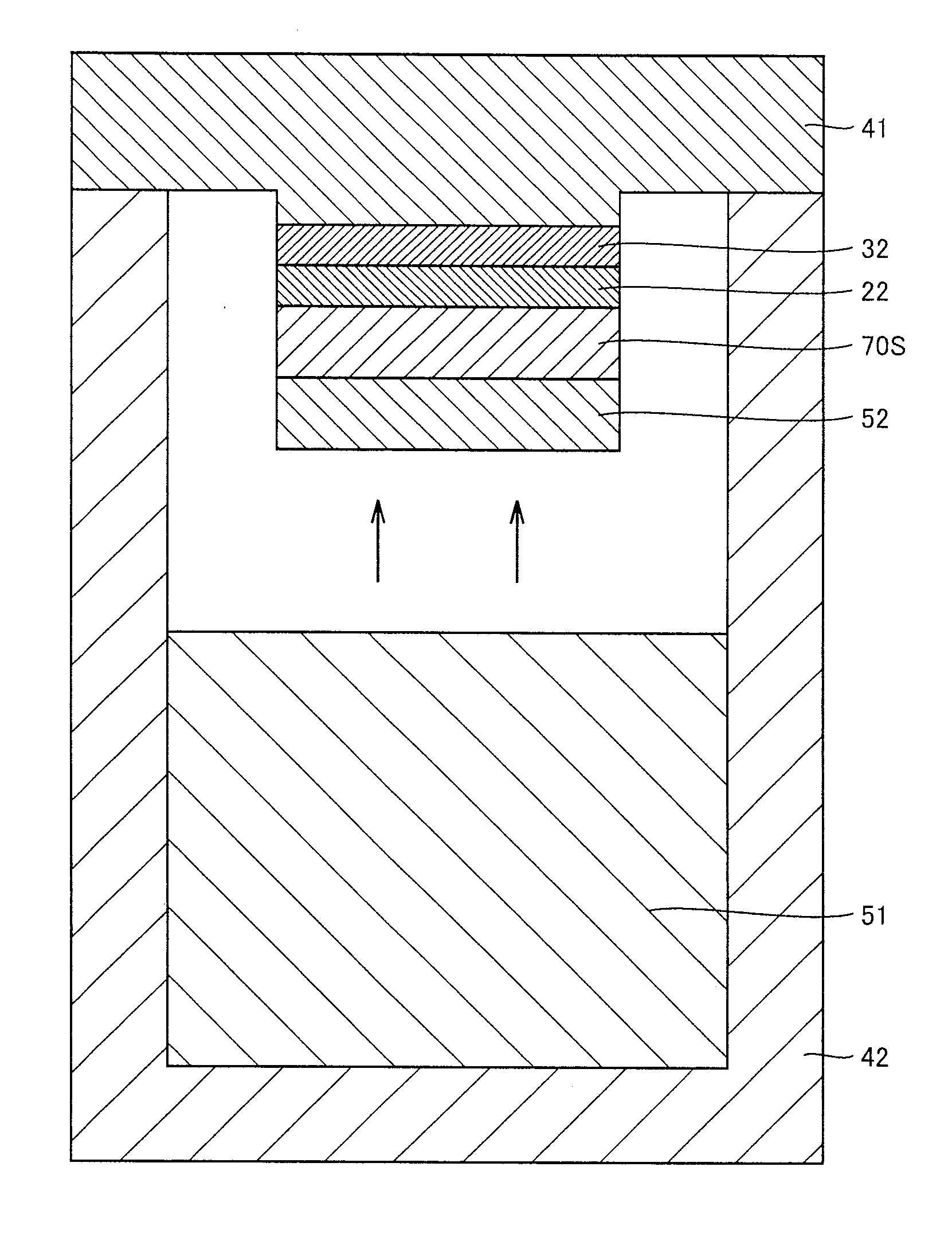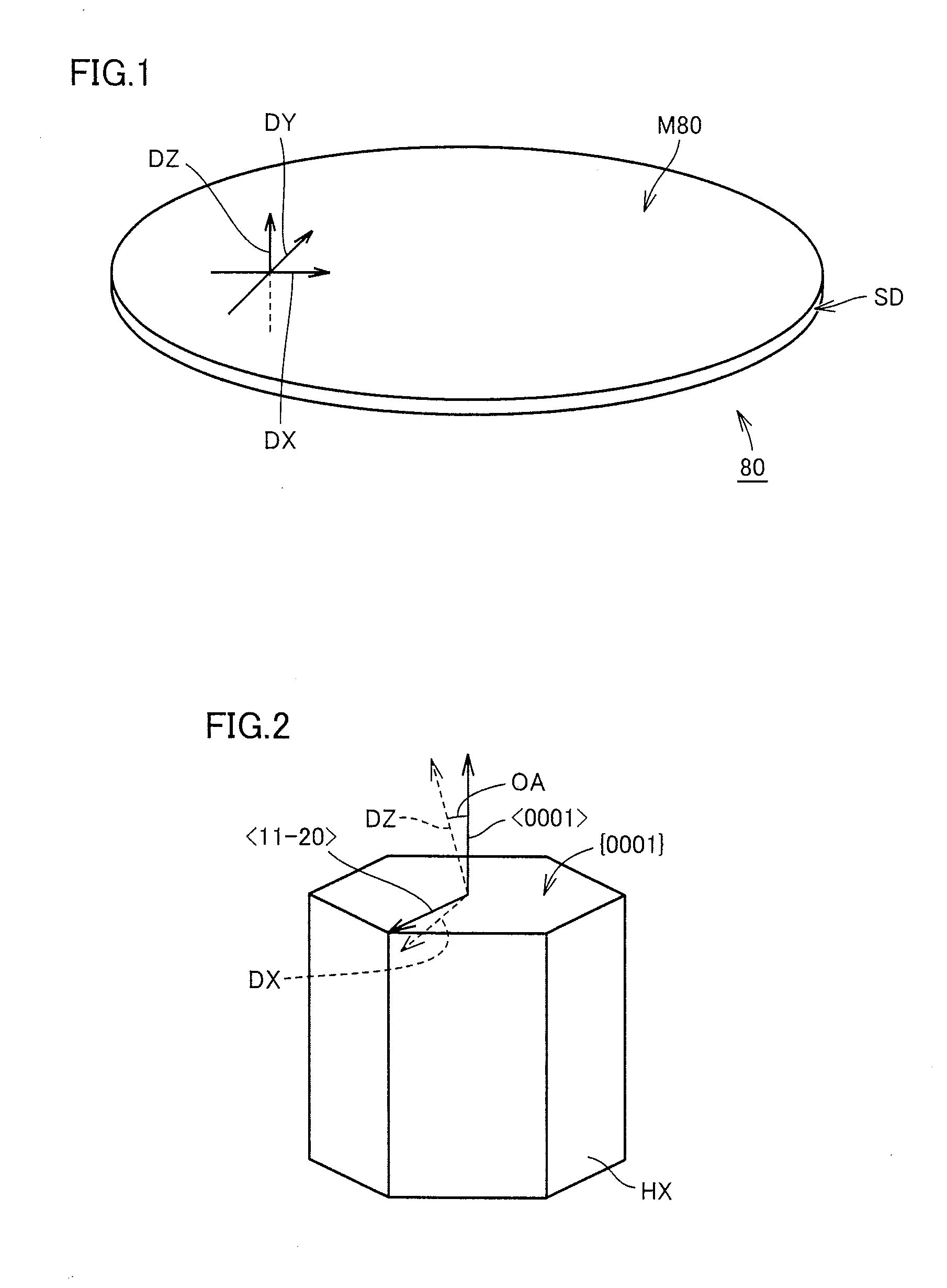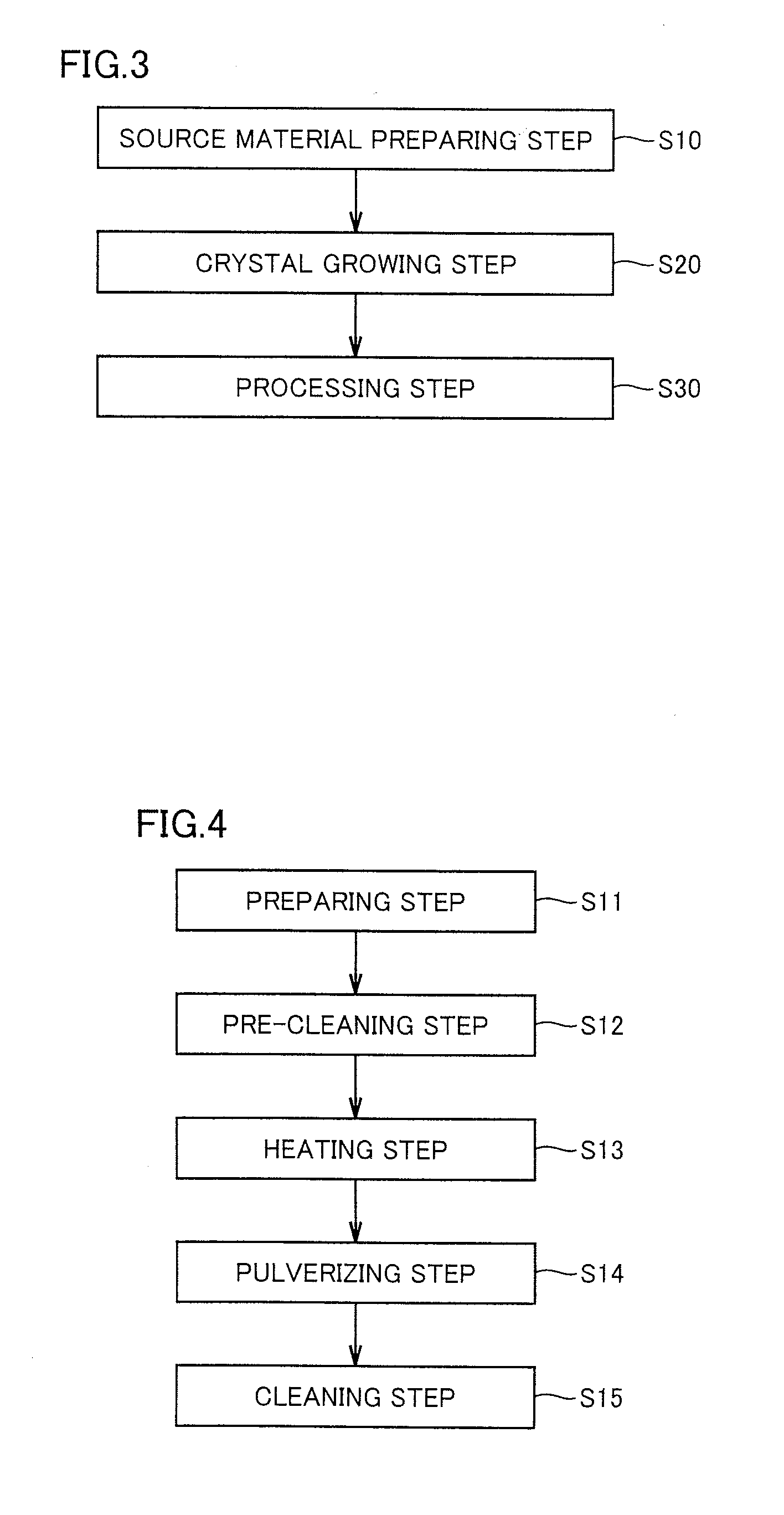Silicon carbide substrate and method of manufacturing the same
a technology of silicon carbide and substrate, which is applied in the direction of polycrystalline material growth, crystal growth process, synthetic resin layered products, etc., can solve the problem of 0.01 cm sup>2 as the lower limit of the micropipe density, and achieve excellent performance and stable forming
- Summary
- Abstract
- Description
- Claims
- Application Information
AI Technical Summary
Benefits of technology
Problems solved by technology
Method used
Image
Examples
example
[0121]Samples of a silicon carbide substrate were fabricated in order to confirm the effect of the present invention.
[0122](Preparation of Source Material) First, a plurality of small pieces of silicon having a diameter of not less than 1 mm and not more than 1 cm, and carbon powder having an average particle size of 200 μm were prepared. The small pieces of silicon were silicon chips having a purity of 99.999999999% used for withdrawing a silicon single crystal.
[0123]Next, 1541 g of the small pieces of silicon and 659 g of the carbon powder thus prepared were lightly kneaded, and the resultant mixture was charged into a graphite crucible. The graphite crucible used was heated in advance to 2300° C. in a high-frequency furnace under reduced pressure of 0.013 Pa of argon gas, and maintained for 14 hours.
[0124]Next, the graphite crucible into which the mixture of the small pieces of silicon and carbon powder was charged was placed in an electric furnace, and was vacuumed until the pre...
PUM
| Property | Measurement | Unit |
|---|---|---|
| frequency | aaaaa | aaaaa |
| thickness | aaaaa | aaaaa |
| tensile strength | aaaaa | aaaaa |
Abstract
Description
Claims
Application Information
 Login to View More
Login to View More - R&D
- Intellectual Property
- Life Sciences
- Materials
- Tech Scout
- Unparalleled Data Quality
- Higher Quality Content
- 60% Fewer Hallucinations
Browse by: Latest US Patents, China's latest patents, Technical Efficacy Thesaurus, Application Domain, Technology Topic, Popular Technical Reports.
© 2025 PatSnap. All rights reserved.Legal|Privacy policy|Modern Slavery Act Transparency Statement|Sitemap|About US| Contact US: help@patsnap.com



